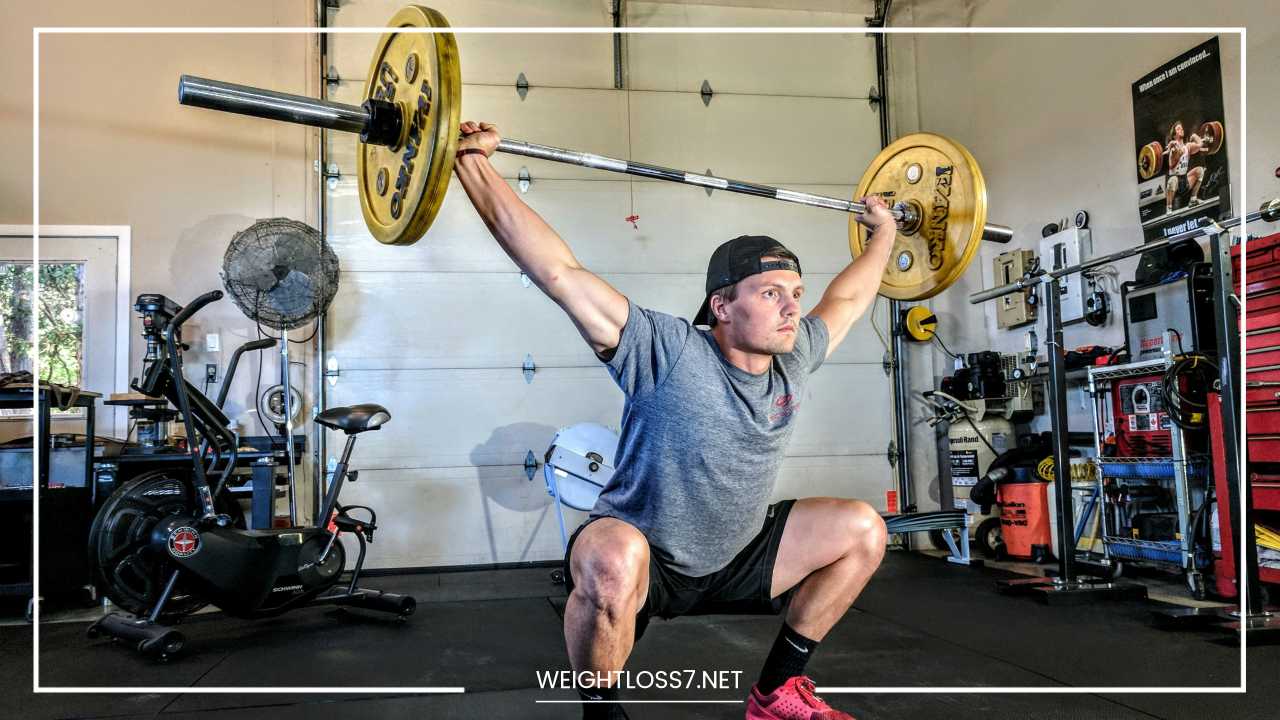The Ultimate Workout Plan for Fat Burning

Workout Plan for Fat Burning
Burn Fat Fast: Ultimate Workout Guide
Losing weight and burning fat are common goals shared by many people striving for better health and fitness. While diet is a critical component of any weight loss strategy, exercise plays a vital role in accelerating fat loss, improving overall health, and enhancing energy levels.
Crafting a well-structured workout plan tailored to your individual needs and fitness goals is essential for achieving lasting results.
This comprehensive guide will delve into the key components of an effective fat-burning workout plan, providing detailed insights into cardiovascular exercise, strength training, high-intensity interval training (HIIT), flexibility and mobility, and how to tailor these components to your unique situation.
Understanding Fat Burning
To design an effective fat-burning workout plan, it’s crucial to understand how fat burning works. Fat loss is not just about burning calories; it’s about creating a metabolic environment where your body efficiently uses fat as a primary fuel source. Here’s a closer look at the science behind fat burning:
- Energy Systems and Fat Utilization: When you exercise, your body relies on different energy systems depending on the intensity and duration of the activity. At lower intensities, your body primarily uses fat as a fuel source. As exercise intensity increases, your body shifts to using more carbohydrates. This shift is why varying exercise intensity can help maximize fat burning.
- Lipolysis: Lipolysis is the process through which stored fat is broken down into free fatty acids and glycerol, which can then be used for energy. This process is enhanced through sustained physical activity and a well-balanced diet that creates a caloric deficit.
- Metabolic Rate: Your resting metabolic rate (RMR) is the number of calories your body burns at rest. Increasing muscle mass through strength training can elevate your RMR, leading to higher calorie expenditure even when you’re not exercising.
- Afterburn Effect: High-intensity workouts, especially HIIT, can create an afterburn effect (excess post-exercise oxygen consumption, or EPOC), where your body continues to burn calories at an elevated rate even after the workout has ended.
Key Components of a Fat-Burning Workout
A well-rounded fat-burning workout plan includes several key components. Each plays a unique role in promoting fat loss and improving overall fitness.
1. Cardiovascular Exercise
Cardiovascular exercise is fundamental to any fat-burning plan. It increases your heart rate, improves circulation, and enhances your body’s ability to utilize fat as an energy source.
Intensity:
- Moderate-Intensity Cardio: Aim for a level where you can still talk, but feel your heart rate elevated. This level of intensity helps maximize fat oxidation and endurance.
- High-Intensity Cardio: Short bursts of high-intensity work can significantly increase calorie burn and improve cardiovascular fitness.
Duration:
- Guideline: Aim for at least 30 minutes of moderate-intensity cardio most days of the week. For more advanced fat loss, consider incorporating longer sessions or increasing the intensity.
Types of Cardio:
- Steady-State Cardio: Activities like jogging, swimming, and cycling at a consistent pace.
- Interval Training: Alternating between high and low intensity (e.g., sprinting for 30 seconds followed by a 1-minute walk).
Benefits of Cardiovascular Exercise:
- Enhanced Fat Oxidation: Promotes the use of fat as an energy source.
- Improved Heart Health: Increases cardiovascular efficiency and endurance.
- Increased Caloric Expenditure: Helps create a caloric deficit necessary for fat loss.
2. Strength Training
Strength training is essential for building muscle, which in turn increases your resting metabolic rate. This makes it easier to burn calories even when not exercising.
Importance:
- Muscle Mass: Building muscle increases your overall metabolic rate, enhancing fat loss.
- Body Composition: Strength training helps in developing lean muscle mass and reducing body fat percentage.
Frequency:
- Guideline: Perform strength training exercises 2-3 times a week, allowing at least one rest day between sessions to ensure muscle recovery.
Exercises:
- Compound Movements: Focus on exercises that work multiple muscle groups simultaneously. Examples include squats, deadlifts, bench presses, and rows.
- Isolation Exercises: Include exercises that target specific muscles (e.g., bicep curls, tricep extensions) to complement compound movements.
Resistance:
- Guideline: Use weights that challenge your muscles but allow you to maintain proper form. Aim for 8-12 repetitions per set for muscle building.
Benefits of Strength Training:
- Increased Muscle Mass: Helps boost metabolism and improve body composition.
- Enhanced Functional Strength: Improves overall strength and endurance.
- Better Bone Health: Strength training promotes bone density and reduces the risk of osteoporosis.
3. High-Intensity Interval Training (HIIT)
HIIT is a potent tool for burning fat and improving cardiovascular fitness through short bursts of intense exercise followed by recovery periods.
Benefits:
- Efficient Calorie Burn: HIIT can burn a significant number of calories in a short amount of time.
- Enhanced EPOC: HIIT increases the afterburn effect, leading to higher calorie expenditure post-exercise.
- Improved Fitness: Boosts both aerobic and anaerobic fitness levels.
Sessions:
- Guideline: Include 2-3 HIIT sessions per week. Ensure you have rest days between sessions to prevent overtraining.
Structure:
- Intervals: Alternate between high-intensity exercises (e.g., sprints, burpees) and low-intensity recovery periods (e.g., walking, gentle jogging).
- Duration: Sessions typically last between 15-30 minutes, depending on the intensity and fitness level.
Examples of HIIT Workouts:
- Tabata: 20 seconds of intense exercise followed by 10 seconds of rest, repeated for 4 minutes.
- Circuit Training: Perform a series of exercises (e.g., jumping jacks, push-ups, squats) with minimal rest in between.
Benefits of HIIT:
- Time Efficiency: Provides a high-calorie burn in a shorter time frame.
- Increased Metabolism: Elevates metabolism and promotes fat loss.
- Improved Cardiovascular Health: Enhances both aerobic and anaerobic capacity.
4. Flexibility and Mobility
Flexibility and mobility exercises are often overlooked but are crucial for overall fitness and injury prevention.
Importance:
- Reduced Muscle Soreness: Helps alleviate muscle tension and soreness after workouts.
- Injury Prevention: Improves range of motion and reduces the risk of strains and sprains.
- Enhanced Performance: Increases joint and muscle flexibility, improving exercise efficiency.
Frequency:
- Guideline: Incorporate stretching into both warm-up and cool-down routines. Aim for 5-10 minutes of stretching before and after workouts.
Types of Stretching:
- Static Stretching: Hold each stretch for 15-30 seconds. Examples include hamstring stretches, quadriceps stretches, and shoulder stretches.
- Dynamic Stretching: Perform controlled, smooth movements that gently take you to the limits of your range of motion (e.g., leg swings, arm circles).
- Yoga: Incorporate yoga poses that enhance flexibility and promote relaxation (e.g., downward dog, child’s pose).
Benefits of Flexibility and Mobility Training:
- Improved Range of Motion: Enhances joint flexibility and movement quality.
- Decreased Muscle Tension: Reduces tightness and improves muscle function.
- Better Recovery: Facilitates faster muscle recovery and reduces the likelihood of injuries.
Tailoring Your Workout Plan
While the core components of cardiovascular exercise, strength training, HIIT, and flexibility are essential, tailoring your workout plan to your individual needs will optimize results and enhance adherence. Consider the following factors:
1. Fitness Level
Beginners:
- Start Slowly: Begin with lower intensity and gradually increase as you build endurance and strength.
- Focus on Form: Prioritize learning proper exercise techniques to prevent injuries.
Intermediate to Advanced:
- Progressive Overload: Continuously challenge your muscles by increasing weights, intensity, or duration.
- Variety: Incorporate different exercises and training methods to avoid plateaus and keep workouts engaging.
2. Goals
Weight Loss:
- Combine Cardio and Strength: Incorporate both cardiovascular and strength training exercises to maximize calorie burn and muscle growth.
- Monitor Progress: Track changes in weight, body measurements, and fitness levels to assess effectiveness.
Muscle Building:
- Focus on Strength Training: Emphasize compound movements and progressive overload to build muscle.
- Ensure Recovery: Allow adequate rest between strength training sessions to promote muscle growth.
Overall Fitness:
- Balanced Approach: Include a mix of cardio, strength training, HIIT, and flexibility exercises to improve all aspects of fitness.
- Set Goals: Establish short-term and long-term fitness goals to stay motivated.
3. Time Constraints
Limited Time:
- HIIT Workouts: Utilize high-intensity interval training for efficient fat burning and cardiovascular improvement in less time.
- Circuit Training: Combine exercises into circuits to maximize workout efficiency and effectiveness.
Extended Time:
- Varied Workouts: Incorporate longer sessions of cardio, strength training, and flexibility exercises to enhance overall fitness.
- Include Rest Days: Ensure you have rest days to recover and prevent overtraining.
4. Preferences
Enjoyment:
- Choose Activities You Like: Select exercises and workouts that you enjoy to increase adherence and motivation.
- Variety: Include a range of activities to keep workouts interesting and prevent boredom.
Social Aspect:
- Group Classes: Consider participating in group fitness classes for added motivation and social interaction.
- Workout Buddy: Partner with a friend or family member to stay accountable and make workouts more enjoyable.
Additional Tips for Fat Burning
To complement your workout plan and enhance fat burning, consider incorporating these additional strategies:
1. Nutrition
Balanced Diet:
- Whole Foods: Focus on consuming whole, nutrient-dense foods like fruits, vegetables, lean proteins, whole grains, and healthy fats.
- Caloric Deficit: Create a moderate caloric deficit by consuming fewer calories than you burn to promote fat loss.
Macronutrients:
- Protein: Incorporate adequate protein to support muscle repair and growth (e.g., lean meats, fish, beans, and tofu).
- Carbohydrates: Choose complex carbohydrates that provide sustained energy (e.g., brown rice, quinoa, and vegetables).
- Fats: Include healthy fats that support overall health and hormone function (e.g., avocados, nuts, and olive oil).
2. Hydration
Importance:
- Stay Hydrated: Drink plenty of water throughout the day to support metabolic processes and maintain performance during workouts.
- Pre- and Post-Workout: Hydrate before, during, and after exercise to replenish fluids and aid recovery.
Guidelines:
- Daily Intake: Aim for at least 8-10 glasses of water daily, and adjust based on activity level and individual needs.
3. Rest and Recovery
Importance:
- Prevent Overtraining: Allow sufficient time for rest and recovery between workouts to avoid burnout and injury.
- Quality Sleep: Aim for 7-9 hours of quality sleep per night to support overall health and recovery.
Recovery Strategies:
- Active Recovery: Engage in low-intensity activities like walking or stretching on rest days.
- Foam Rolling: Use a foam roller to alleviate muscle tension and improve blood flow.
4. Consistency
Commitment:
- Regular Exercise: Make exercise a consistent part of your routine to achieve and maintain fat loss and fitness goals.
- Track Progress: Monitor your progress through fitness logs, measurements, and performance improvements to stay motivated.
Enjoyment:
- Stay Motivated: Set realistic goals and celebrate milestones to keep motivation high and ensure long-term success.
Final Thoughts
An effective fat-burning workout plan integrates cardiovascular exercise, strength training, HIIT, and flexibility training to target fat loss and enhance overall health.
By understanding the science of fat burning and tailoring your routine to your unique needs, you can optimize results and achieve your fitness goals.
Remember to focus on consistency, incorporate a balanced diet, stay hydrated, and prioritize rest and recovery. Embrace the journey to a healthier, fitter you, and enjoy the process of reaching your fitness aspirations.

















